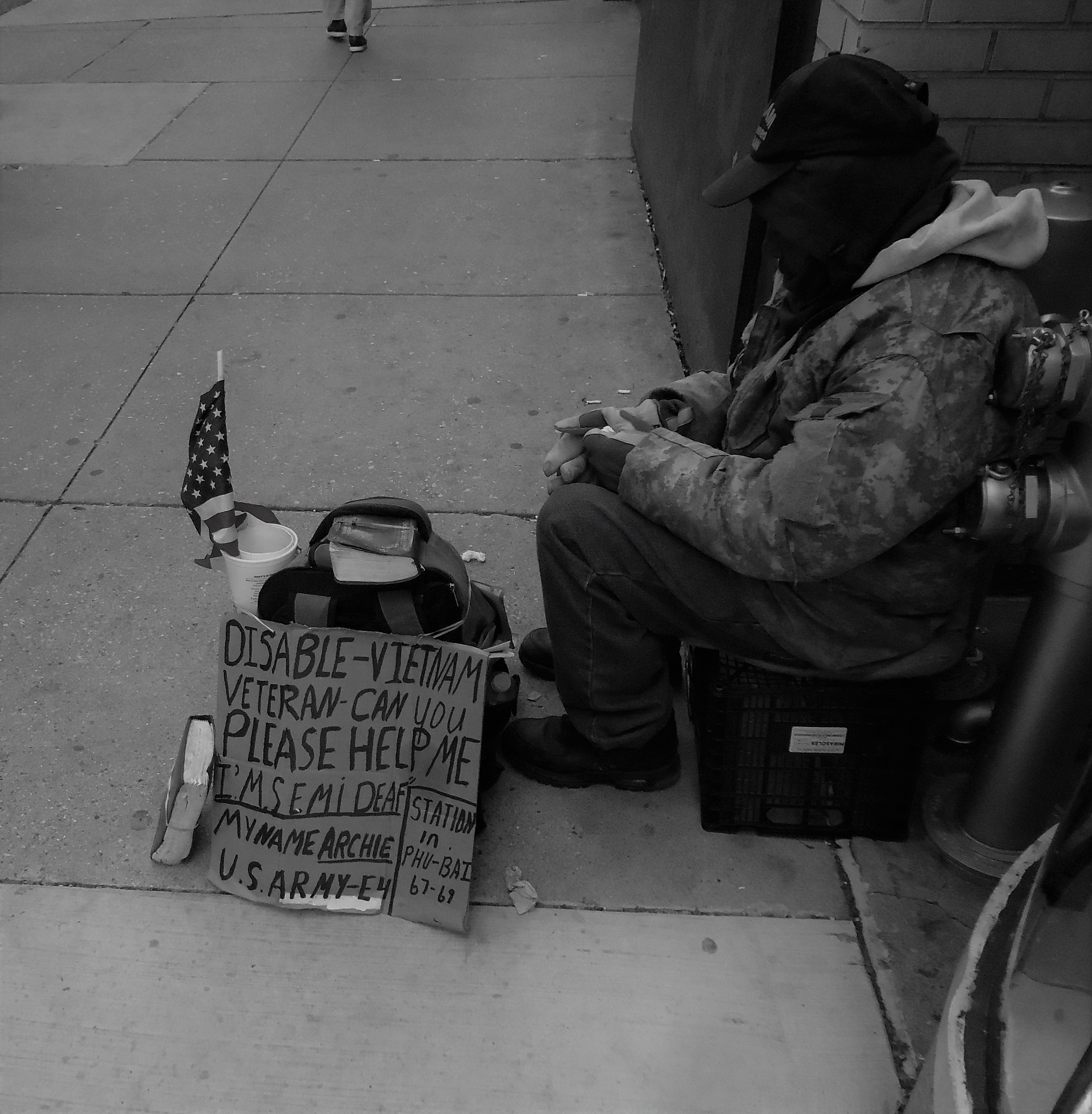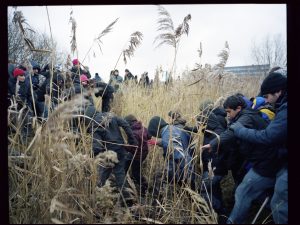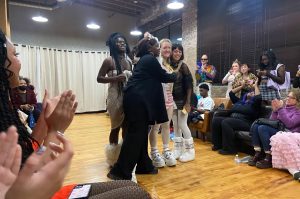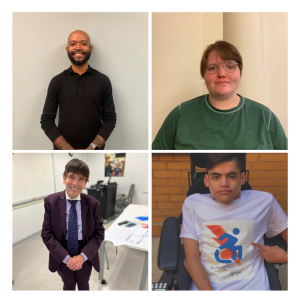Enester Amerson has a warm smile and kind brown eyes. He was a high school athlete back in the day; he ran cross country and won multiple awards and trophies playing basketball. Basketball is still important to him, apparent by the Oklahoma City Thunder cap on his head.

He proudly described himself as “60 years old. My sign is cancer, I’m divorced, have three children and I’m self-employed.”
And he is equally proud of the years from 1974 to 1977 when he served during the Vietnam War in “a specialized unit, ASA – Army Security Agency.”
“My job was to snatch radio signals out of the air,” Amerson said with a smile. “We rode around in one-ton trucks, would park, throw up our antennas and search the airways for signals. When we got the right signal, (we) recorded it and shipped it to the Pentagon. I loved it.”
But this man who was once trusted in a highly sensitive job communicating with the Pentagon and went on to became an engineer, eventually became one of the 60,000 veterans across the nation who found themselves homeless.
They are living in our neighborhoods and working among us; and many are struggling. According to the True North Project for Veterans, Illinois is home to over 800,000 veterans and on any given night 1,000 of those veterans do not have a place of their own that they can call home.
This is not just a statewide issue. There are over 60,000 homeless veterans, across the United States, many of whom are dealing with some form of disability.
Amerson sought help from the non-profit organization The Midwest Shelter for Homeless Veterans, in the far western Chicago suburb of Wheaton, Illinois.
“I went through a sad time in my life,” Amerson said. “I was depressed, I was mad. I had no income, no family to go to… this place got me back on my feet, did a lot for me over the last four years.”
Jane Tyschenko, executive director for the shelter, has been working in homeless services for the last 18 years.
“The number one problem for veterans is lack of affordable housing,” said Tyschenko. “Number two, there are a lot of disabilities; whether it is service connected or a mental illness, substance abuse, under-employment or the inability to maintain employment.”
For Amerson, it was back injury coupled with some life choices that pushed away family members and left him with few options.
“I came to Midwest Shelter in July of 2012. I got hurt in 2009, and couldn’t get work anymore,” said Amerson. “I fought going on disability, trying my best to find some kind of work again. I went from being an engineer, making decent money to making no money at all.”
While disabilities are a sad reality, veterans also often find it challenging integrating back into society.
“A lot of time, tactics that were key to survival during deployment may not translate well into veterans’ lives post-military,” said Kat Gilman, a case manager at Midwest Shelter.
Nick Black, a co-founder of the non-profit organization “Stop Soldier Suicide” based in Raleigh, North Carolina, served as an officer in the United States Army for five years. During that time, Black spent over two years in combat zones in Afghanistan.
“From my personal experience, it was really hard for me to acclimate,” said Black. “For the first six months, I was a completely different person than I am today. It’s culture shock coming home. It’s really hard to become part of society again… it takes a really long time.”
Methods for combating veteran seclusion upon their return home frequently include assessing where individual veterans stand and what programs best suit their situation. The Midwest Shelter believes in a multi-program approach.
“We are involved in homeless veteran taskforces, which has been a huge accomplishment,” Tyschenko said. “Historically, it’s been difficult for organizations to accept that just because a client is receiving services here, that doesn’t mean that they are not also receiving services here and here and here. But if we come together and work collectively, we all can meet their comprehensive needs.”
While veterans now have more options to help them cope, many are still fighting battles. Often these battles, like combat, can be a matter of life and death.
![A homeless man in Boston. Photo courtesy: Matthew Woitunski (Own work) [CC BY 3.0 (http://creativecommons.org/licenses/by/3.0)], via Wikimedia Commons](http://www.chicagotalks.org/wp-content/uploads/2017/01/800px-Homeless_Man-374x300.jpg)
That number accounted for 18 percent of all suicides in 2014. Older veterans are more at risk; Veterans Affairs said that 65 percent of veteran suicides were 50 years or older.
“Brian, our founder, sent me an email while he was deployed in Iraq saying we lost more men and women to suicide than the enemy,” said Black. “That, to this day, still pisses me off; and that’s why I got involved in Stop Soldier Suicide.”
Black says that the lack of research on veteran suicide is troubling, but a key component in addressing the issue is to remember that once a soldier, always a soldier. Amerson agrees.
“A veteran’s concept about life is different than a civilian’s concept about life. We do things differently because of our training and experiences,” said Amerson.
Today, Amerson resides in one of the shelter’s low-rent options, a few blocks away from where he was originally housed when he first sought help. Amerson pays his own rent and gets to live independently, doing it at a fraction of the cost of a traditional apartment in Wheaton.
“For the last four years, I’ve felt safe and had less worries,” said Amerson.
And while Amerson’s story tells of a veteran receiving the help needed to get his life back on track before it was too late, many are not so lucky.
“The pride issues of veterans is one thing that is really not discussed,” Amerson said with a thoughtful pause. “Veterans need to get to the point of saying, ‘Yes, I may be ashamed to be here, but I have no other choice.’ That’s when change can happen.”














Be First to Comment